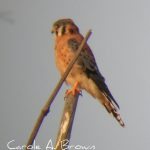In a recent article, Genevieve Schmidt described her view of the planting pyramid, and she made several very important points:
Except for removing invasive plants, no-one is asking you to take away your favorite garden plants
Adding native plants will help you attract more wildlife.
The idea of a planting pyramid brings to mind a recent interview I did with Doug Tallamy, where he discussed turning the current usage of plants in our landscapes upside down.
If you look at the graphic above, you’ll see that currently the area occupied by lawn in our landscapes is 79%.
Eighty percent of what we have in our landscapes after lawn is exotic plants, which, while pretty, do very little to support birds, butterflies, or pollinators.
Less than 5 percent of the whole enchilada of our planted landscapes are locally native plants, which offer the most benefit for wildlife.
So what if we turned this pyramid upside down in our gardens? If we were to work to increase the amount of space occupied by locally native, indigenous plants, and decrease the area covered by lawn and exotic plants, we would be doing a great service to the other species that share our world.
We could go a long way to helping our local wildlife in our gardens simply by reducing the area of our lawns. I’m not saying you need to not have any lawn at all, but if we reduced our lawn area by 10% every year, and added more native plants, we’d be creating habitats that would attract more birds and other wildlife.
Choosing the best plants for your wildlife garden does not have to be difficult, and does not mean you have to give up your favorite flowers. With a little thought, you can help to turn this pyramid on it’s head and create welcoming habitat for wildlife in your gardens.
Check out Genevieve Schmidt at North Coast Gardening, or follow @NCoastGardening on twitter.
More From Ecosystem Gardening:
Submit your review | |








